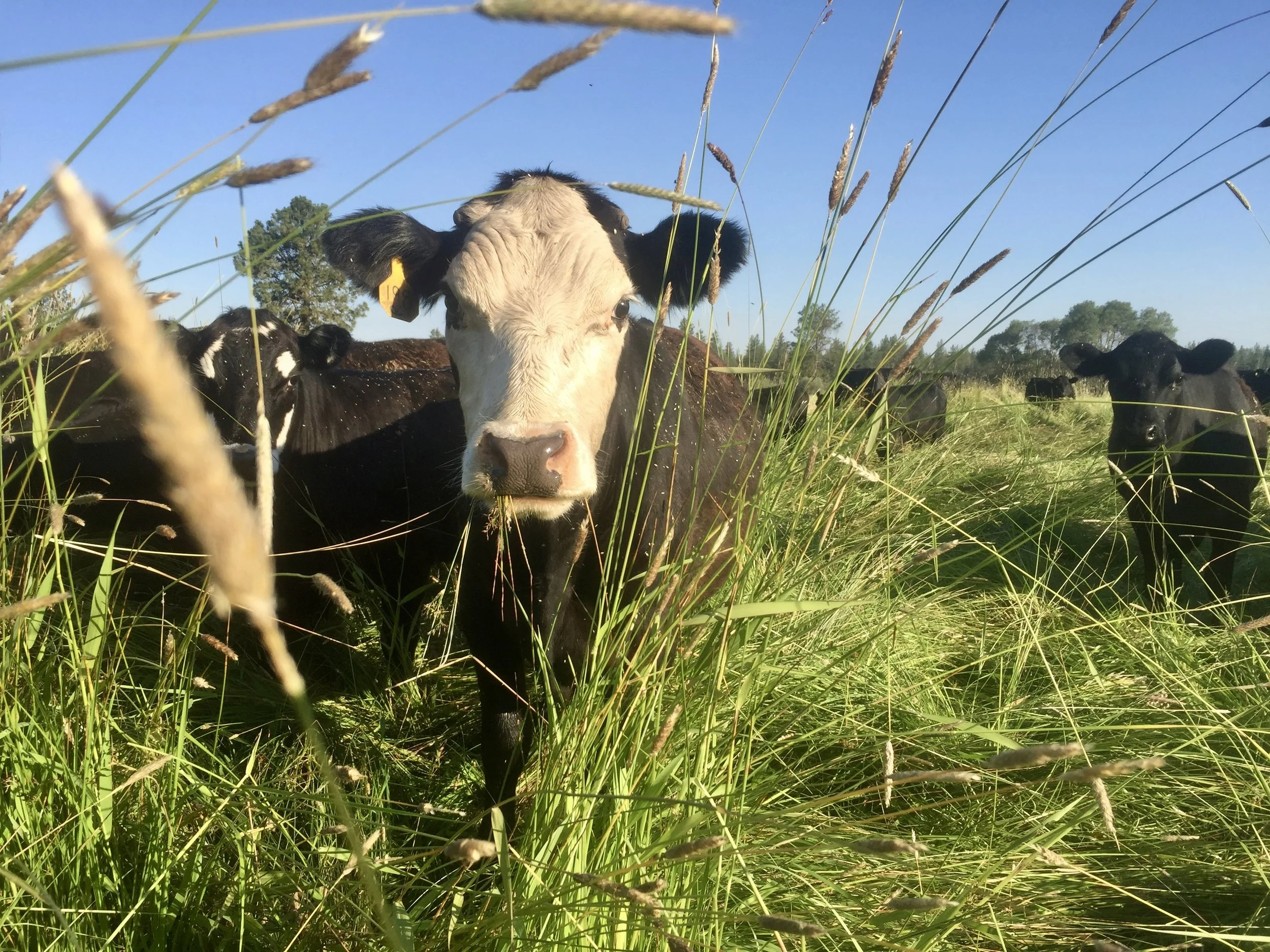Why Grass Fed?
It's good for you!
Meat, eggs, and dairy products from grass-pastured animals are ideal for your health. Compared with commercial products, they offer you more "good fats" (Omega 3) and fewer "bad" fats (Omega 6). They are richer in antioxidants, including vitamin E, beta-carotene, and vitamin C. Our beef is great for folks looking to go paleo or to focus on a high protein, high quality fat diet.
It's good for the animals!
Cattle are highly specialized animals who have evolved to eat grass. Feeding cattle grain changes the pH of their stomach acid, which can make them very sick. This can lead to the increased use of antibiotics, which in turn leads to more antibiotic resistant bacteria. The rumen of grass fed beef has also been found to contain significantly less of the strain of the E. coli virus that is deadly to humans.
It's good for the environment!
Using a process called planned grazing, we put animals at the right place, at the right time, for the right reasons, mimicking natural processes. Grasslands developed in symbiosis with large herds of ruminants, and in nature, the moisture and bacteria that exist in the rumen of grazing animals is essential to the breakdown and cycling of nutrients. By timing when and where our herd is, we build topsoil and invigorate grass growth, which sequesters carbon. We have tripled our organic soil carbon since 1996. If we could raise soil carbon by 1% on one billion hectares of the world's grasslands, we could actually return to pre-industrial levels of atmospheric carbon. This is the focus of our work as the learning site for Roots of Resilience.

